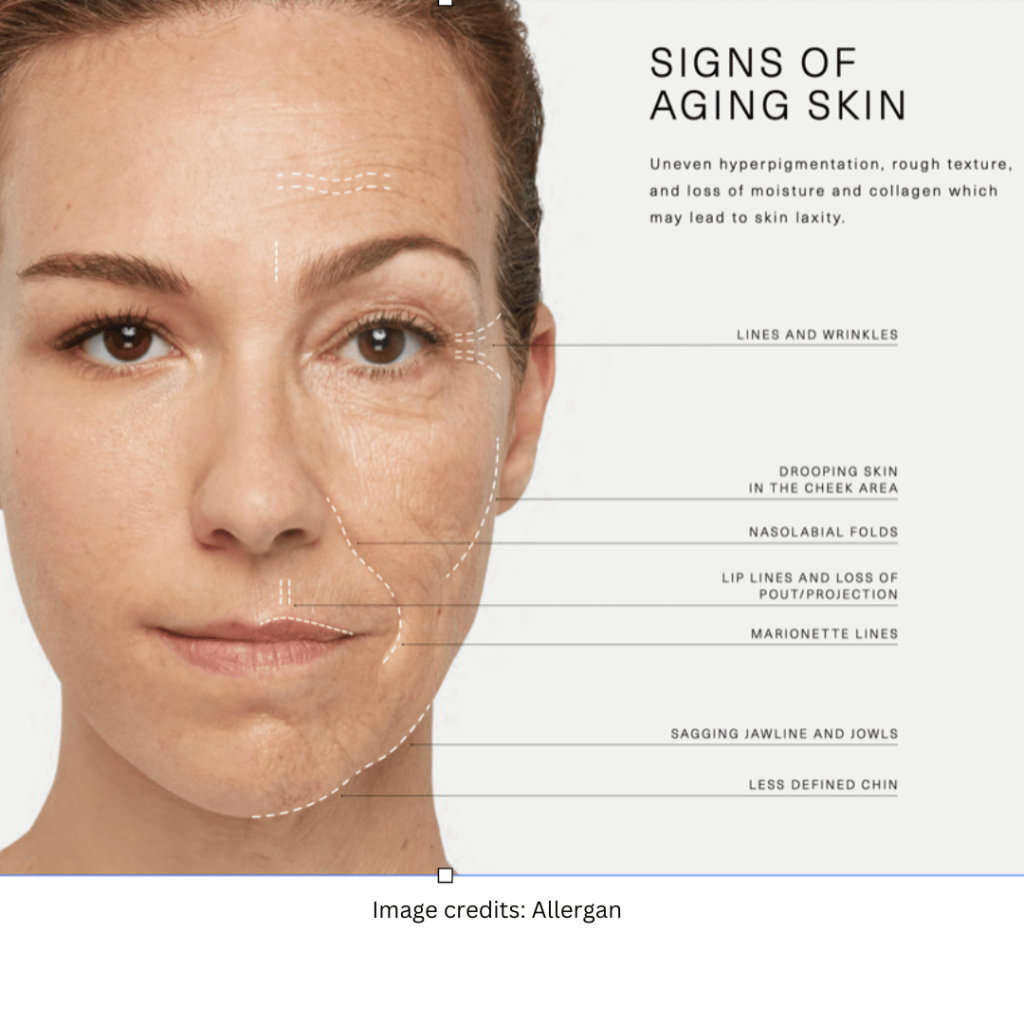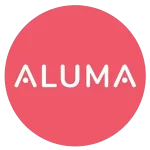Patients of all ages visit Aluma to pump the brakes on aging. Some are concerned with tear troughs, others jowls. Understanding and treating the underlying cause of the undesirable symptom leads to more natural and beautiful results. As a patient, the Layers of facial aging are important to know.
Over time, gradual changes in facial structures are noticed by all. What we may need to know is that many layers and structures are involved in the aging process, from bone to skin. The onset and speed of the changes vary between structures and individuals. The layered concept1 considers five different anatomic layers in the aging process. Let’s discuss common changes in each layer, proceeding from bone up to skin.
Bone
The skeleton serves as the underlying foundation for overlying soft tissue. Just as we lose bone in our bodies with age, the bones of the face also diminish with time. Bones of the eye sockets, the cheeks, the jaw, and the nose all gradually recede, resulting in a loss of support for the overlying skin and soft tissue. This bone restructuring manifests on the surface as sagging features as the soft tissues descend from the cheeks toward the jawline and neck.

*note all angles recede with age
Deep Fat
Just above the skeletal level is a layer of loose connective tissue and collections of fat cells called fat pads. These fat pads contribute to a youthful appearance by providing structural support to the overlying soft tissue and adjacent ligaments. The fat pads start to shrink gradually in middle age resulting in lost lift and projection of the cheek and a deflated appearance. The skin also shows increased lines from ligaments that have lost the deep support of these fat pads. The jawline and lower face begin to look heavier as the superficial tissues descend with gravity.
Muscles
The muscles of facial expression lie on top of the deep fat pads and are contained within connective tissue. The complex of soft tissue and muscles is known as the superficial musculoaponeurotic system (SMAS). This layer is typically the focus of surgical facelift procedures. With age, the facial muscles lengthen and develop increased tone at rest(1) resulting in persistent wrinkles. The increased muscle tone overpowers the weakened skin (due to loss of collagen and elasticity). This phenomenon has been termed dynamic discord and results in worsened facial wrinkles and exaggerated facial expressions such as excess show of the molar teeth with smiling.

Superfical Fat
Above the level of the muscles and just below the skin lies a layer of fat cells. The fat cells are organized into compartments, separated by connective tissue, nerves, and lymphatics. These superficial fat compartments provide volume and stability to facial features and contribute significantly to the overall appearance. Research has demonstrated that the superficial fat pads are highly mobile, resulting in movement down the face as deep support is lost.
Skin
The skin is the largest body organ and the most visible; thus, changes in the skin are often the most noticeable signs of aging. Unlike the other layers, the skin is highly subject to extrinsic aging forces such as UV light, smoking, and air pollution. Common skin issues experienced by many people include fine wrinkles, laxity, and uneven texture and pigmentation. These issues are due to gradual age-related changes in the cells and the surrounding extracellular matrix. Cells of the skin undergo cellular senescence whereby a progressive decrease in new cell production results in thinned skin with less regenerative capacity. In the extracellular matrix, collagen, elastin, and oligosaccharide production decrease, resulting in loss of tensile strength, elasticity, and tissue hydration.

Guided by the Anatomy of Aging, Create a plan for a more youthful appearance.
Think comprehensively
Interrelated changes are happening to various facial structures simultaneously. Equipped with an understanding of the anatomy and aging process of the face, we can create a more harmonious result by strategically addressing each of these changes in a comprehensive fashion. Relying too heavily on one modality for facial rejuvenation can create unnatural results. (We’ve all seen examples of this on social media). Combining small treatments of different modalities to address multiple aspects of aging typically creates a more natural result.
Less Product placed more precisely
Understanding how the face is changing allows for strategic placement of small amounts of product to create natural results. Less strategic approaches focus on adding a great deal of product to “refill” the face. The result is often an unnatural over filled appearance. Restoring projection and lift with small amounts of filler placed at precise locations results in improved outcomes with less product.

